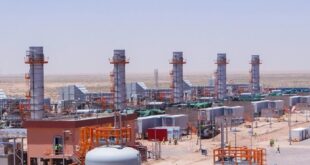Around 12.1 trillion yen ($82 billion) has already been spent to deal with the 2011 disaster at the Fukushima No. 1 nuclear power plant, according to sources at the Board of Audit of Japan.
That means more than half of the government’s total estimated cost of 21.5 trillion yen, including compensation payments and reactor decommissioning expenses, has been used in the 11 years since the meltdowns occurred.
However, the nuclear decommissioning process is not going smoothly, and there are fears that the planned discharge of treated radioactive water from the plant into the sea could damage the reputations of the disaster-affected areas.
Expenses could still expand, and the BOA on Nov. 7 asked the government to review its projected cost.
The BOA also asked the government to explain how the public would bear the cost if it is reviewed.
The government, however, said the cost will likely not increase.
“We sincerely listen to various views but at least at the moment, we do not believe the cost will surpass the estimated figure, and we do not plan to review it,” said an official for the Agency for Natural Resources and Energy.
The BOA studied costs incurred up until fiscal 2021.
The breakdown was: 7.1472 trillion yen for damages paid to people affected by the disaster; 2.9954 trillion yen for decontamination-related costs; 268.2 billion yen related to temporary storage facilities for contaminated materials; and 1.7019 trillion yen for nuclear decommissioning work and dealing with contaminated water.
The BOA in 2018 calculated the total cost incurred until the end of 2017 was around 8.6 trillion yen.
The government has repeatedly revised its estimate of the cost.
In 2016, it nearly doubled its estimate from 11 trillion yen to 21.5 trillion yen.
Expenses for damages, decontamination work, or activities related to temporary storage facilities are categorized as “compensation costs.”
The government pays the “compensation costs” with money borrowed from financial institutions or through other means.
Such debts are paid back using revenue from electricity companies across Japan collected through electricity bills or tax revenue.
Tokyo Electric Power Co., operator of the stricken plant, and other parties published an “estimated compensation cost” of 12.5865 trillion yen as of April.
However, this figure doesn’t include projected damages to compensate businesses and others for reputational damage caused by the treated water being discharged into the sea.
Also, seven court rulings have ordered the government and TEPCO to pay damages to those who fled the disaster more than the figures recommended in the interim guidelines published by the Dispute Reconciliation Committee for Nuclear Damage Compensation.
The committee was established within the Ministry of Education, Culture, Sports, Science and Technology.
These seven rulings have been finalized. If the guidelines are reviewed, the recommended figures for damages could increase.
A BOA official said these two points–damages for reputational damage and damages for evacuees–could raise the cost to deal with the accident, including the amount the public will have to bear.
TEPCO pays for all nuclear decommissioning work and dealing with contaminated water.
According to the BOA, the breakdown of the costs in this area in the 11 years after the accident was: 195.7 billion yen for removing nuclear fuel from spent fuel pools; 182.1 billion yen for dealing with contaminated water and treated water; and 37.1 billion yen for removing melted fuel debris from nuclear reactors.
Removing fuel debris is said to be the most difficult task in the process of decommissioning, and the government estimates the cost for this process will reach 1.37 trillion yen by 2031.
TEPCO, in fact, abandoned the planned removal work this year because robotic arms used for the task haven’t been developed as quickly as predicted.
The utility now aims to start that work in the second half of fiscal 2023.
It was TEPCO’s second postponement of the work, which was initially scheduled to start in 2021.
TEPCO has saved funds every year for decommissioning the Fukushima nuclear power plant. The balance was 585.5 billion yen as of the end of fiscal 2021.
But TEPCO’s financial condition is deteriorating, and it could be forced to spend the money more quickly depending on how smoothly the task of removing fuel debris goes and run out of the funds.

 Iran Energy News Oil, Gas, Petrochemical and Energy Field Specialized Channel
Iran Energy News Oil, Gas, Petrochemical and Energy Field Specialized Channel



